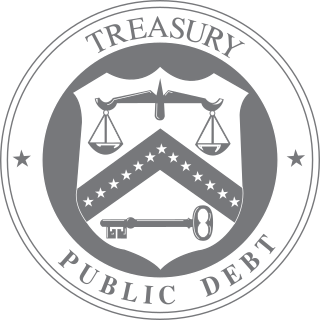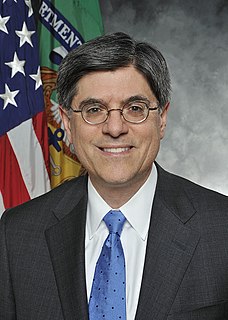
The secretary of the treasury is the head of the United States Department of the Treasury, which is concerned with all financial and monetary matters relating to the federal government, and, until 2003, also included several major federal law enforcement agencies. The secretary of the treasury is the principal economic advisor to the president of the United States and plays a critical role in policy-making by bringing an economic and government financial policy perspective to issues facing the federal government. The secretary of the treasury is a member of the United States Cabinet, and is nominated by the president of the United States. Nominees for Secretary of the Treasury undergo a confirmation hearing before the United States Senate Committee on Finance, prior to a vote by the United States Senate.

The Department of the Treasury (USDT) is the national treasury of the federal government of the United States where it serves as an executive department. The department oversees the Bureau of Engraving and Printing, and the U.S. Mint; these two agencies are responsible for printing all paper currency and coins, while the treasury executes its circulation in the domestic fiscal system. The USDT collects all federal taxes through the Internal Revenue Service; manages U.S. government debt instruments; licenses and supervises banks and thrift institutions; and advises the legislative and executive branches on matters of fiscal policy. The Department is administered by the secretary of the treasury, who is a member of the Cabinet. The treasurer of the United States has limited statutory duties, but advises the Secretary on various matters such as coinage and currency production. Signatures of both officials appear on all Federal Reserve notes.

Monetary policy concerns the actions of a central bank or other regulatory authorities that determine the size and rate of growth of the money supply. For example, in the United States, the Federal Reserve is in charge of monetary policy, and implements it primarily by performing operations that influence short-term interest rates.
The Treasurer of the United States is an official in the United States Department of the Treasury who was originally charged with the receipt and custody of government funds, though many of these functions have been taken over by different bureaus of the Department. The Treasurer remains the depositary officer of the United States with regard to deposits of gold, Special Drawing Rights, and financial gifts to the Library of Congress. As such, the office has nominal oversight of the United States Bullion Depository. The Treasurer's signature appears together with that of the Secretary of the Treasury on all Federal Reserve Notes.

The Bureau of Engraving and Printing (BEP) is a government agency within the United States Department of the Treasury that designs and produces a variety of security products for the United States government, most notable of which is Federal Reserve Notes for the Federal Reserve, the nation's central bank. In addition to paper currency, the BEP produces Treasury securities; military commissions and award certificates; invitations and admission cards; and many different types of identification cards, forms, and other special security documents for a variety of government agencies. The BEP does not produce coins; all coinage is produced by the United States Mint. With production facilities in Washington, D.C., and Fort Worth, Texas, the Bureau of Engraving and Printing is the largest producer of government security documents in the United States.

United States Treasury securities are government debt instruments issued by the United States Department of the Treasury to finance government spending as an alternative to taxation. Treasury securities are often referred to simply as Treasurys. Since 2012, U.S. government debt has been managed by the Bureau of the Fiscal Service, succeeding the Bureau of the Public Debt.

Martin Stuart Feldstein was an American economist. He was the George F. Baker Professor of Economics at Harvard University, and the president emeritus of the National Bureau of Economic Research (NBER). He served as President and Chief Executive Officer of the NBER from 1978 through 2008. From 1982 to 1984, Feldstein served as chairman of the Council of Economic Advisers and as chief economic advisor to President Ronald Reagan. He was also a member of the Washington-based financial advisory body the Group of Thirty from 2003.

The Bureau of the Public Debt was an agency within the Fiscal Service of the United States Department of the Treasury. United States Secretary of the Treasury Timothy Geithner directed the Bureau be combined with the Financial Management Service into the single Bureau of the Fiscal Service in 2012.

The Financial Institutions Reform, Recovery, and Enforcement Act of 1989 (FIRREA), is a United States federal law enacted in the wake of the savings and loan crisis of the 1980s.

Jacob Joseph "Jack" Lew is an American attorney and politician who served as the 76th United States Secretary of the Treasury from 2013 to 2017. A member of the Democratic Party, he also served as the 25th White House Chief of Staff from 2012 to 2013 and Director of the Office of Management and Budget in both the Clinton Administration and Obama Administration.
Executive Schedule is the system of salaries given to the highest-ranked appointed officials in the executive branch of the U.S. government. The president of the United States appoints individuals to these positions, most with the advice and consent of the United States Senate. They include members of the president's Cabinet, several top-ranking officials of each executive department, the directors of some of the more prominent departmental and independent agencies, and several members of the Executive Office of the President.
Jeffrey B. Liebman is an American economist who served as the executive associate director and chief economist and then as the acting deputy director for policy of the Office of Management and Budget within the Obama Administration. During the 2008 Presidential Campaign he served as a top economic advisor to the presidential campaign of Democratic Senator Barack Obama of Illinois.
The Office of Financial Markets is an office of the United States federal government in the United States Department of the Treasury. OFM serves as the department's advisor on broad matters of domestic finance, financial markets, Federal, State and local finance, Federal Government credit policies, lending and privatization.

Alicia Haydock Munnell is an American economist who is the Peter F. Drucker Professor of Management Sciences at Boston College's Carroll School of Management. Educated at Wellesley College, Boston University, and Harvard University, Munnell spent 20 years as an economist at the Federal Reserve Bank of Boston, where she researched wealth, savings, and retirement among American workers. She served in the Bill Clinton administration as Assistant Secretary of the Treasury for Economic Policy and as a member of the Council of Economic Advisers. Since 1997 she has been a professor at Boston College and director of its Center for Retirement Research, where she writes on retirement income policy.

Neal Steven Wolin is the CEO of the corporate advisory firm Brunswick Group, an equity partner of Data Collective, a board partner of Social Capital, and a limited partner advisor of Nyca Partners. He is the longest-serving Deputy Secretary of the U.S. Department of the Treasury and also served as Acting Secretary of the Treasury in early 2013.

Larry R. Felix is an American civil servant who served as the Director of the Bureau of Engraving and Printing (BEP) within the United States Department of the Treasury from 2006 to 2015.

Larry E. Rolufs was an official in the United States Department of the Treasury who was Director of the Bureau of Engraving and Printing from 1995 to 1997.

Rajeev V. Date is an American businessman, attorney, and venture capital investor who served as Deputy Director and Special Advisor for the United States Consumer Financial Protection Bureau. He had previously served in a variety of leadership positions at the Bureau, including several months as the startup agency's leader, as the Special Advisor to the United States Secretary of the Treasury. He is credited with guiding the Consumer Financial Protection Bureau's early strategic, operational, and policy initiatives.

Leonard R. Olijar is an American government official who has served as the Director of the Bureau of Engraving and Printing since 2015. As director, Olijar is responsible for managing the Bureau of Engraving and Printing, an agency within the United States Department of the Treasury tasked with producing Federal Reserve Notes, paper currencies, and United States Treasury securities.














